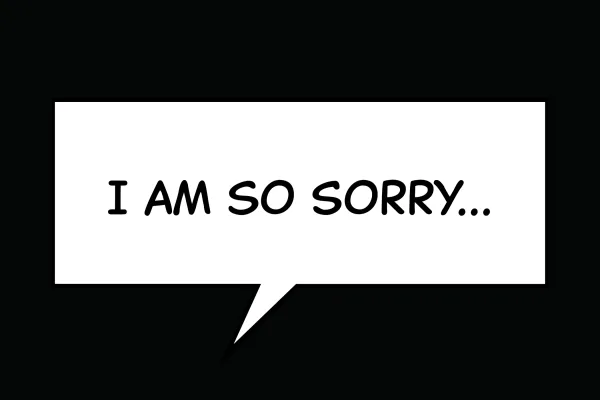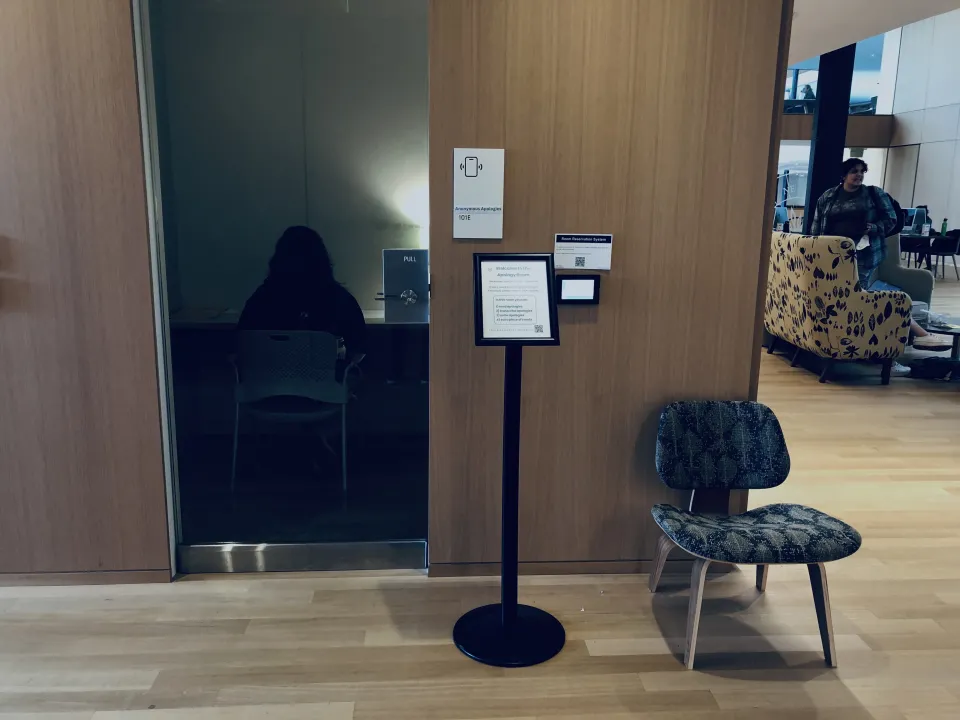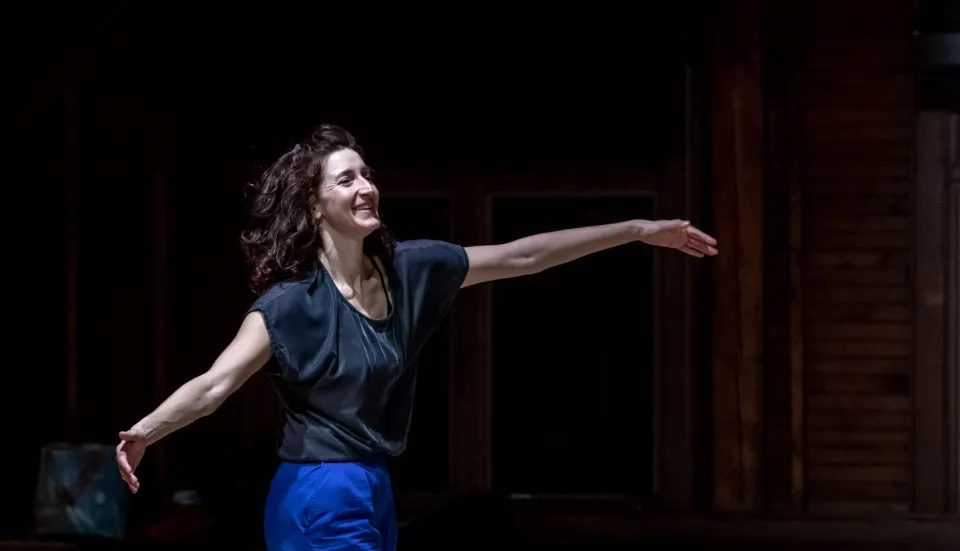If You’re Sorry And You Know It, Walk Inside
Campus Life
Gabrielle Revlock M.F.A. ’24 creates an interactive room where apologies are the central feature

Graphic by Shawn Prairie
Published June 14, 2024
Is writing an apology a shameful act or a generous one?
The answer to that question—plus what a good apology looks like—is what Gabrielle Revlock M.F.A. ’24 set out to explore during a recent one-day art installation in Neilson Library called “Anonymous Apologies.”
Visitors accessed the piece, which was conceived for Professor Lynne Yamamoto’s ARS 370 class, “Topics in Installation Art,” by entering a small room off the library’s central atrium. Inside, they found a cozy space with a single chair, a table lamp, a jar of chocolates, and a stack of paper. Participants could then sort through an envelope of apologies to transcribe or write their own from scratch.
As a prompt, Revlock urged visitors to “allow yourself to explore the apology—let it be more than a sentence long.”
“Writing an apology does not mean that everything is your fault,” she noted. “Taking responsibility for our part is generous. The more we practice writing (or saying) apologies, the more it will become a part of our culture.“
In response, Smith community members submitted roughly 50 anonymous notes, writing touching and emotional messages to former friends, to estranged family, to intimate acquaintances, younger siblings, and former partners.
“I’m sorry I didn’t communicate how I was feeling,” wrote one visitor. “I kept pretending everything was fine until it wasn’t. I know you felt deceived. That’s on me.”
“I’m sorry that I wasn’t there when you passed away,” wrote another. “You died on my birthday and in hindsight, I really rather would have been with you.”

“Anonymous Apologies,” created in a small room off Neilson Library's central atrium, featured a cozy space with a single chair, a table lamp, a jar of chocolates, and space to write (or transcribe) apologies. Photo by Gabrielle Revlock.
In creating the piece, Revlock, a teaching fellow and M.F.A. in choreography and performance in the Smith dance department, said she drew from her own experience teaching contact improvisation, a dance form which uses touch as a form of communication. She said she noticed in class that students would start out by trying to build in enough rules to prevent all misunderstandings—an effort that was ultimately impossible.
“You’re trying to keep things safe and [positive], but things happen,” she said. “It’s way more valuable to figure out how you get back on track than how to not get off track in the first place.”
Revlock, who leads workshops in ”Restorative Contact,” a movement practice that involves therapeutic touch, was also inspired by such works as Why Won’t You Apologize? by renowned psychologist Dr. Harriet Learner. The book includes both a guide to creating a simple apology and examples of how to apologize well.
“I noticed I had an emotional response to some of these apologies, even though they weren’t for me,” Revlock said. “That helped me see, ‘Oh wow. These words are really powerful, they do something, even when it isn’t about you.’’
Revlock said that the hallmarks of a good apology are the ability to acknowledge how you contributed to the situation, attempt to establish amends, and show empathy with the other person. She noted that the point was to take “a moment to realize what that effect is, even if it seems insignificant, simply acknowledging that effect matters.”
Photos courtesy of Gabrielle Ravlock
In developing her own installation, Revlock aimed to create a format that was as accessible as possible, with various access points. Her first step was to create an online form for participants to submit apologies in advance. She then printed these out for on-site visitors to copy. On April 24, a note posted outside Neilson 101E welcomed visitors to the “apology room.”
“The transcription was nice because it provided a low barrier for entering the room,” Revlock said. “It was interesting to me, the act of embodying someone else’s apology, and how that might, by putting it into your own handwriting, give you a deeper connection with someone else’s words and feelings.”
Visitors agreed, with one noting in the guestbook, “I read through all the apologies and decided one is for me” and another writing “I’m going to have the conversation I’ve been avoiding.”
Revlock will continue accepting anonymous apologies via the online form, with the hopes of someday creating another on-site installation or interactive workshop. And if that day never comes? Revlock is ready.
“Changing your mind about something or making mistakes, that’s allowed,” she said. “Nobody’s going to be perfect.”
